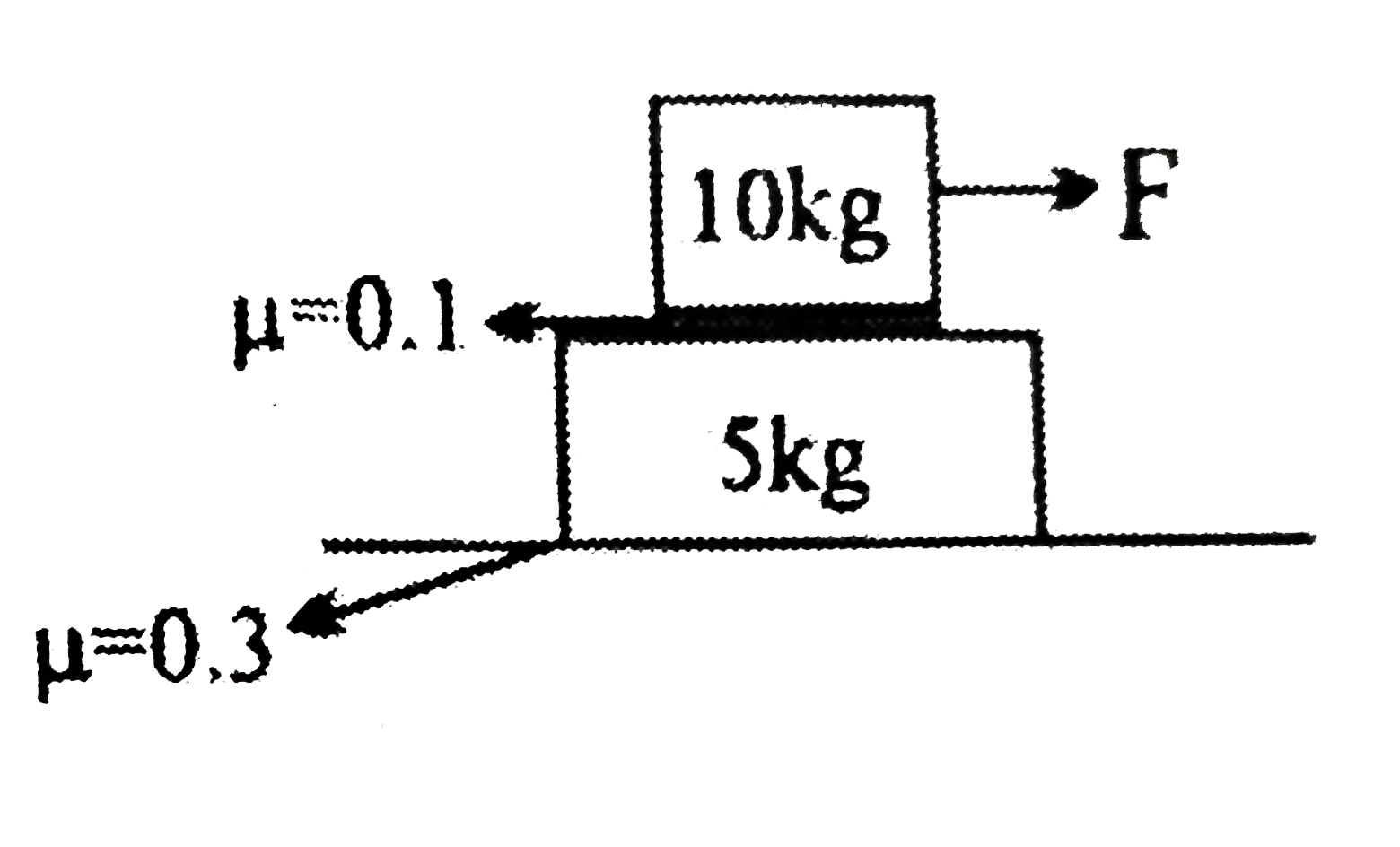
The maximum F which will not cause motion of any of the blocks is Solution in Gujrati
10 N
15 N
data insufficient
None
The correct Answer is:A
Step by step video & image solution for The maximum F which will not cause motion of any of the blocks is by Physics experts to help you in doubts & scoring excellent marks in Class 12 exams.
Updated on:21/07/2023Topper's Solved these Questions
- NEWTON'S LAWS OF MOTION & FRICTIONBOOK - ALLEN CHAPTER - NEWTON'S LAWS OF MOTION & FRICTIONEXERCISE - EXERCISE (JM)
6 Videos
- NEWTON'S LAWS OF MOTION & FRICTIONBOOK - ALLEN CHAPTER - NEWTON'S LAWS OF MOTION & FRICTIONEXERCISE - EXERCISE (JA)
4 Videos
- NEWTON'S LAWS OF MOTION & FRICTIONBOOK - ALLEN CHAPTER - NEWTON'S LAWS OF MOTION & FRICTIONEXERCISE - EXERCISE (O-1)
50 Videos
- MOTION IN A PALNEBOOK - ALLEN CHAPTER - MOTION IN A PALNEEXERCISE - SOLVED EXAMPLE
28 Videos
- NEWTONS LAWS OF MOTIONBOOK - ALLEN CHAPTER - NEWTONS LAWS OF MOTIONEXERCISE - EXERCISE-III
28 Videos
Similar Questions
Two fixed frictionless inclined planes making an angle 30∘ and 60∘ with the vertical are shown in figure. Two blocks A and B are planes. What is the relative vertical acceleration of A with respect to B?
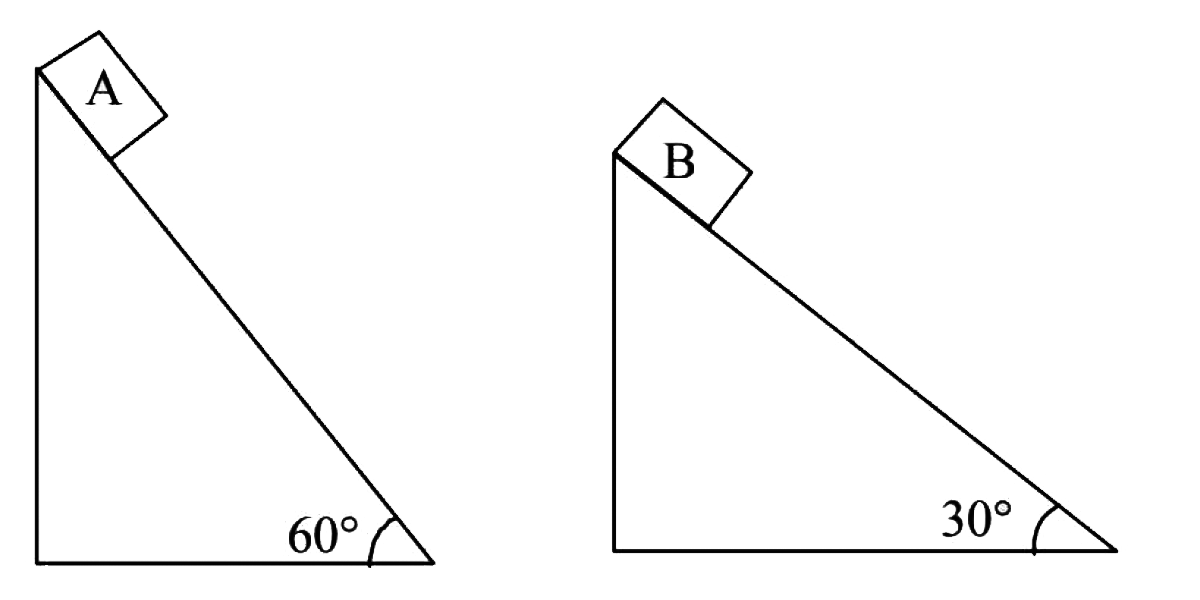
View SolutionA piece of wire is bent in the shape of a parabola y=kx2 (y-axis vertical) with a bead of mass m on it. The bead can slide on the wire without friction. It stays at the lowest point of the parabola when the wire is at rest. The wire is now accelerated parallel to the x-axis with a constant acceleration a. The distance of the new equilibrium position of the bead, where the bead can stay at rest with respect to the wire, from the y-axis is:
View SolutionA ball of mass m kept at the corner as shown in the figure, is acted by a horizontal force F. The correct free body diagram of ball is

View SolutionA particle thrown over a triangle from one end of a horizontal base falls on the other end of the base after grazing the vertex. If αandβ are the base angles of triangle and angle of projection is θ, then prove that (tanθ=tanα+tanβ)
View SolutionAssertion: The driver in a vechicle moving with a constant speed on a straight road is in a non-inertial frame of referance.
Reason: A reference frame in which Newton's laws of motion are applicable is non-inertial.
View SolutionThe 10 kg block is resting on the horizontal surface when the force F is applied to it for 7 s . The variation of F with time is shown . Calculate the maximum velocity reached by the block and the total time t during which the block is in motion. The coefficient of static and kinetic friction are both 0.50.(g = 9.8 m//s^(2))
View SolutionThe friction coefficient between the blocks is μ. If force F is applied on the lower block , analyse motion of two blocks.
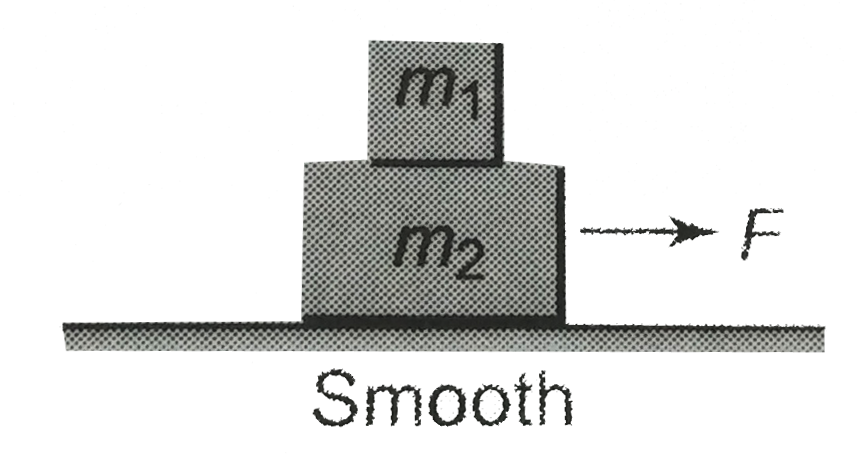
View SolutionFor the arrangement as shown in the figure the maximum force F, for no relative motion between blocks is
View SolutionThe left and of the spring tied to a wall and at the right end is attached to a block of mass m, which is placed on a frictionless ground. The force F displaces the block by distance x where it is exactly balanced by the spring force. What is the maximum speed of the block in the ensuing motion after the force F is removed?
View SolutionThe left end of the spring tied to a wall and at the right end is attached to a block of mass m , which is placed on a frictionless ground. The force F displaces the block by distance x where it is exactly balanced by the spring force. What is the maximum speed of the block in the ensuing motion after the force F is removed?
View SolutionThe 10 kg block is resting on the horizontal surface when the force 'F is applied to it for 7 second. The variation of 'F with time is shown. Calculate the maximum velocity reached by the block and the total time 't' during which the block is in motion. The coefficient of static and kinetic friction are both, 0.50.
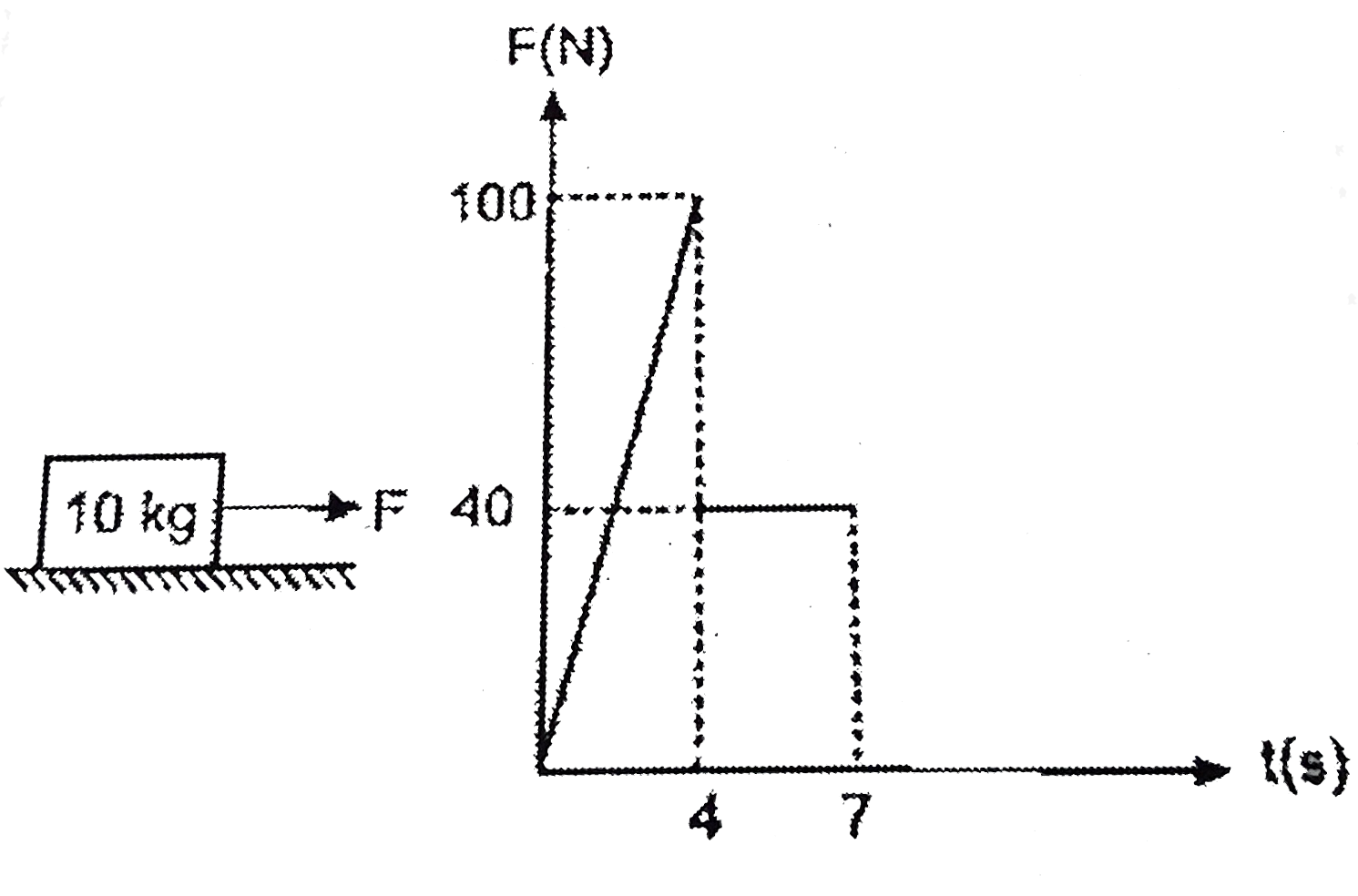
View SolutionA 4.0 kg block is put on top of a 5.0kg block. In order to cause the top block to slip on the bottom one, a horizontal force of 12N must be applied to the top block. Assuming a friction less table the maximum horizontal force F which can be applied to the lower block so that the blocks, will move together should be

View SolutionIn above example find maximum F for which two blocks will move together.
View SolutionFind out the maximum value of F for which both the blocks will move together.
View SolutionIn the given arrangement the maximum value of F for which there is no relative motion between the blocks
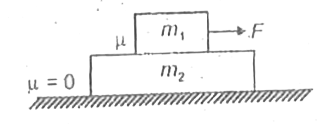
View Solutionचित्र में दर्शाए गए समायोजन में ब्लॉक की गति को अवरुद्ध करने हेतु आवश्यक बल F का अधिकतम मान है।
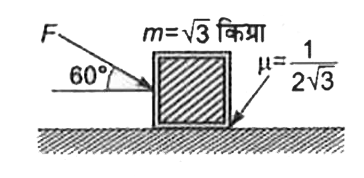 .
.
View Solution
